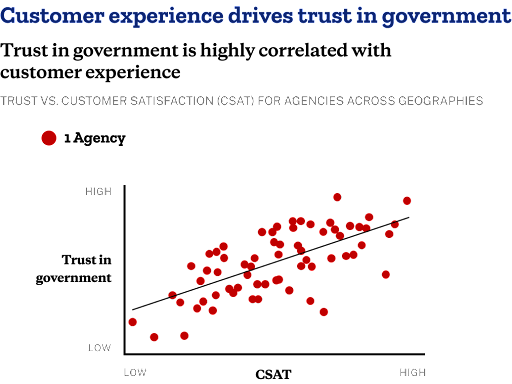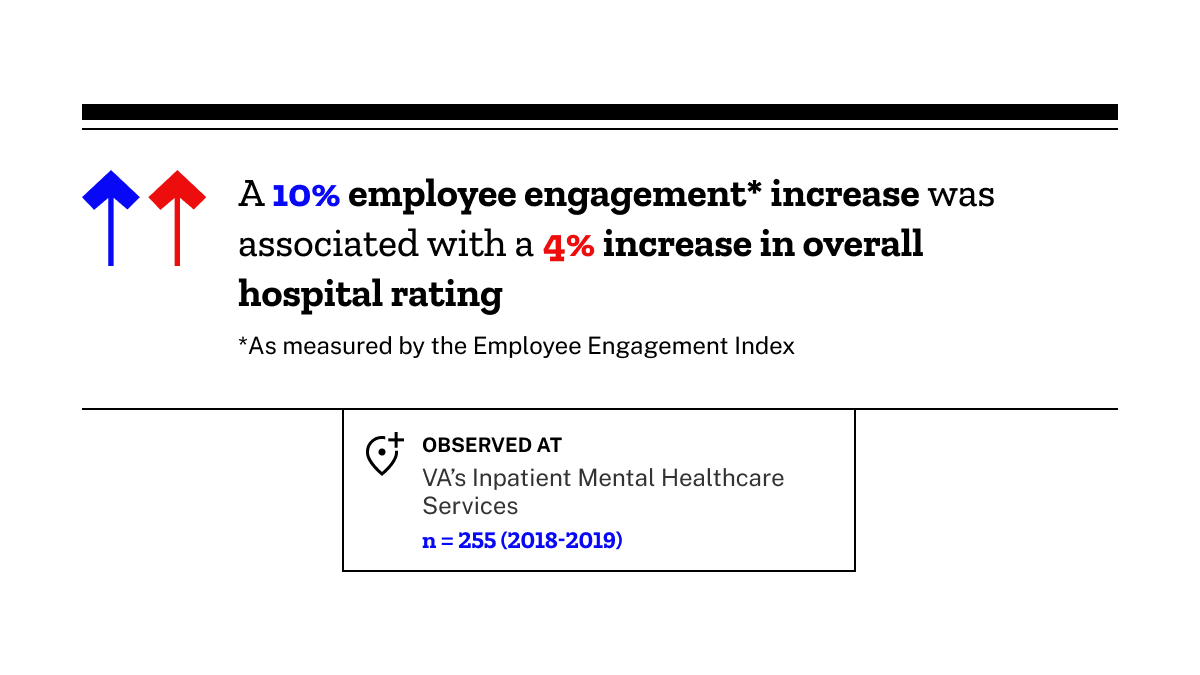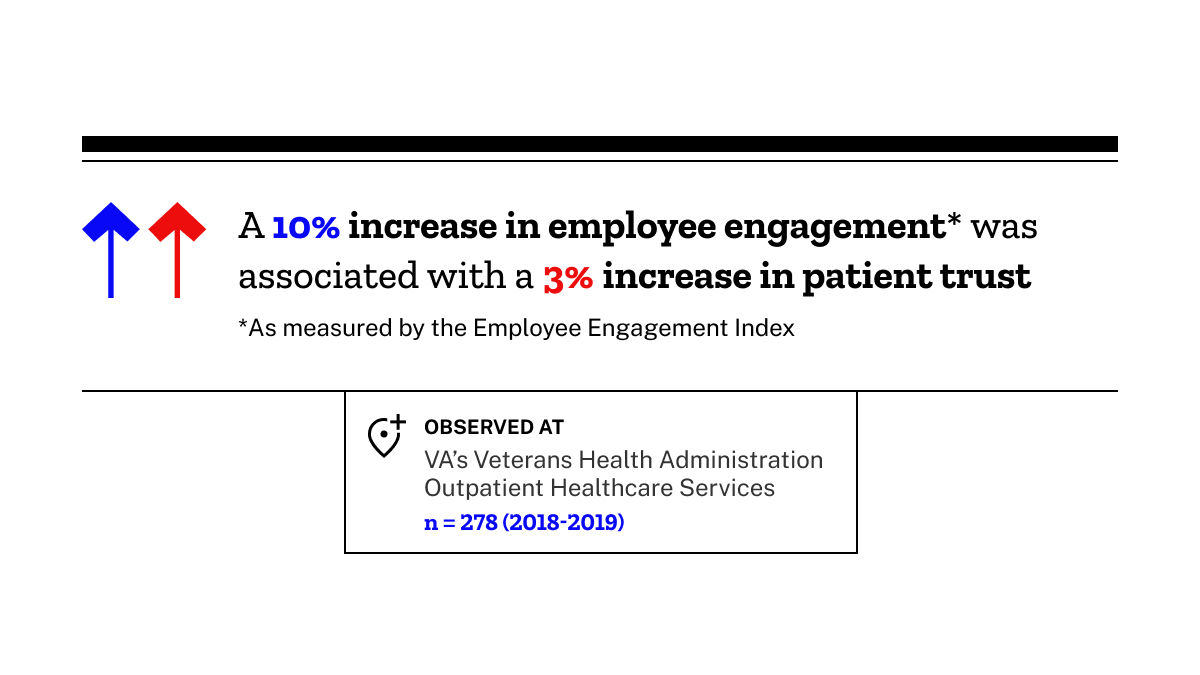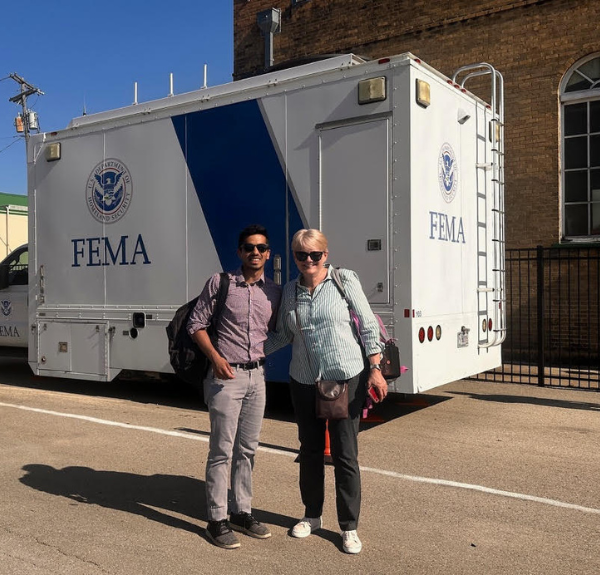Numerous studies across different industries show the importance between the relationship between customer experience and employee engagement. The Federal Government is no exception. Data analyzed for the first time by the Department of Veterans Affairs (VA) Veterans Health Affairs (VHA) National Center for Organization Development (NCOD) shows a promising relationship between improving employee engagement and overall customer experience. Every interaction the public has with a federal agency is an opportunity to deliver an excellent customer experience (CX) — one that the public expects and deserves. These positive experiences are critical to furthering trust and transforming government. The President’s Management Agenda (PMA) established Strengthening and Empowering the Federal Workforce and improving CX with Government Services as the first two priorities.
The VHA analyzed data collected from its workforce and the veterans it serves to better understand this relationship. You can find more information on the results of their analysis below, and we look forward to working with other agencies in the future to explore this relationship in other parts of government.

CX at the VA
The VA defines CX as “the product of interactions between an organization and a customer over the duration of their relationship. VA measures these interactions through Ease, Effectiveness, and Emotion, all of which impact the overall trust the customer has in the organization.”
VA serves approximately nine million veterans, families, caregivers, and survivors at medical centers, benefits offices, and cemeteries across the nation and abroad. To fulfill its mission, VA employs over 400,000 people — many of whom interact directly with veterans and their supporters, and many who provide support services across VA facilities.
As the largest integrated healthcare network in the nation serving over six million unique patients annually, VA has long held that each employee interaction with a patient is an opportunity to own each moment to directly improve that veteran’s experience. Now, VA has completed a small quantitative study using healthcare data to show that demonstrates a potential relationship between employee engagement and patient satisfaction.
The Research
This study assessed the existence of a positive relationship between employee engagement at VA healthcare facilities and patient experience.
Using results from its patient satisfaction surveys, as well as from the VA All Employee Survey (AES), the VHA NCOD worked to better understand the connection between employees’ engagement and the customer’s experience as patients at VA.
VA AES asks employees to rate their agreement with statements like, “I recommend my organization as a good place to work,” and “This organization really inspires the very best in me in the way of job performance.” The VA team compared these results to CX data. The CX data came from surveys that asked veteran patients for their reactions to statements such as,“My provider listened carefully to me” and “My provider explained things in a way that I could understand.” After examining this data from 141 VA healthcare facilities throughout the U.S., the team discovered a potential relationship between employee engagement and patient satisfaction.
Overall, within inpatient mental healthcare services, evidence showed that an increase in the Employee Engagement Index (EEI) by 10% was associated with the overall hospital ratings increasing by an average of 4%. Additionally, within outpatient services, an increase in EEI by 10% was found to be associated with an average of a 3% increase in patient trust.
This promising correlation suggests simultaneous increases in the EEI and trust.


For both inpatients and outpatient centers, there is a relationship between employee engagement and patient satisfaction. For example, where employees reported that they felt more engaged with VA, patients tended to report that their VA healthcare provider listened carefully to their needs. Patients were also more likely to report that they felt a higher degree of trust in their VA facility to meet their healthcare needs. For a more in-depth look at VA’s research, you can view their analysis and modeling results.
Looking Inward
As private sector studies show, an engaged workforce is more likely to create a positive customer experience, resulting in higher trust. After initially focusing its efforts in 2015 to stand up a first-of-its kind CX capability, VA began to examine the employee experience (EX) — not just engagement — and the employee journey. VA used human-centered design best practices and applied a proven CX framework that the department built around CX. Their work to create better experiences between the employee and customer is a priority and continues to expand — and deliver.
What This Means for Federal Agencies
This study is promising. As agencies work hard to align with the PMA and President Biden’s Executive Order on CX, they can explore employee engagement as an investment in both employees and those they serve.
This study also suggests that agencies have two mechanisms to increase public trust in government: first, through direct CX process improvements and service recovery, and second, through creating positive employee experiences, thereby improving employee engagement.
Looking Ahead
What can fellow federal agencies do to improve CX through EX — and in turn continue to increase the public’s trust in government?
- Understand the environment. The best way to begin the journey of improving EX is to first apply human-centered design to deeply understand the employee experience, their pain points, bright spots and moments that matter most, and visualize it through an employee journey map.
- Measure. Identify a set of quantitative and qualitative metrics that provide a sufficiently robust picture of employee engagement — and keep in mind that the right metrics and measurement instruments may vary from agency to agency.
- Communicate. It is important to talk to employees to understand their needs and perspective firsthand. Make sure to follow up with employees after you have made improvements to ensure that your solution is actually meeting employees’ needs and also to reinforce the connection between their feedback and the action taken.
About the Authors
Dustin Brown is the Deputy Assistant Director for Management at the Office of Management and Budget. Barbara C. Morton is the Deputy Chief Veterans Experience Officer at the Department of Veterans Affairs and Dr. Maureen Marks is the Executive Director at the VHA National Center for Organizational Development (NCOD) at the VA.




